Next to Abu-Simbel, probably the most famous temple rescued from Lake Nasser is the Temple of Philae. Philae actually had to be rescued from out of the Lake--much of it was underwater for some 60 years after the first Aswan dam was built (around 1900). When the new High Dam was built, Philae was relocated to a nearby island so that it would not be entirely submerged in the new, deeper lake.
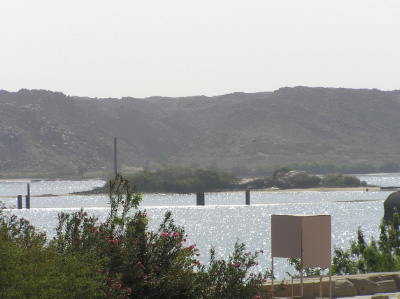 |
|
 |
This is the original island of Philae, now almost completely submerged. This photo is taken from the "new" Philae.
|
|
Philae is a very popular tourist stop and there are fleets of little boats that shuttle people to and from the island.
|
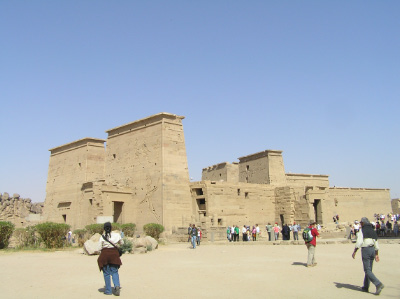 |
|
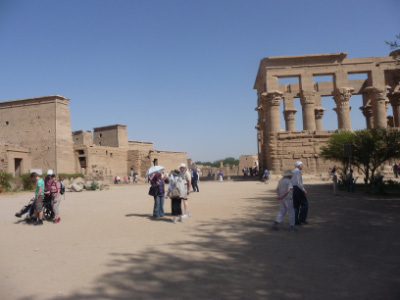 |
The main temple on Philae is the Temple of Isis, begun by Ptolemy XII in the first century BC; Isis remained an important goddess through the Roman period.
|
|
The temple is set in the midst of several other religious structures to form a good-sized complex.
|
 |
|
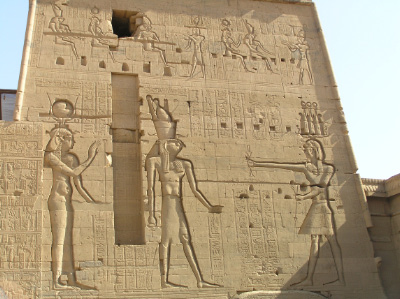 |
The main pylon (gate) shows Ptolemy XII smiting his enemies; the same scene that appears starring Ramses II on many other temples.
|
|
Ptolemy is also depicted making offering to Horus and Isis in the usual style of a pharaoh.
|
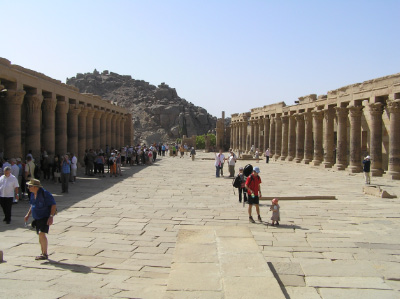 |
|
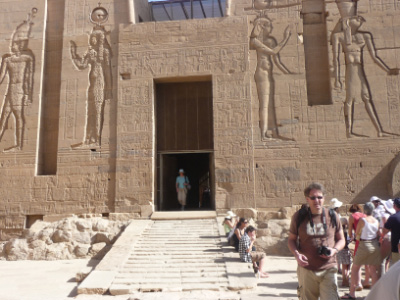 |
A long colonnaded walkway and set of steps leads up to the entrance to the main shrine of Isis.
|
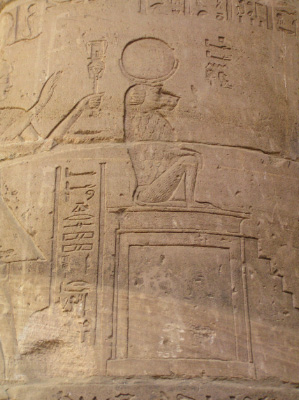 |
|
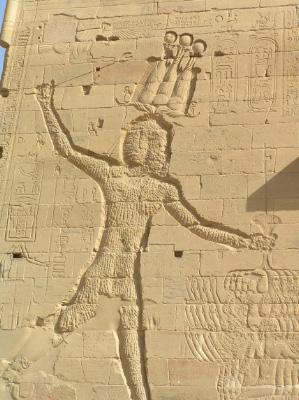 |
Because baboons make a lot of noise in the morning, the Egyptians considered them sun-worshippers so they are frequently found in temple carvings.
|
|
As in many temples, the early Christians defaced many of the human figures, although in this case Ptolemy is damaged on this side of the pylon but not on the other side of the gate.
|
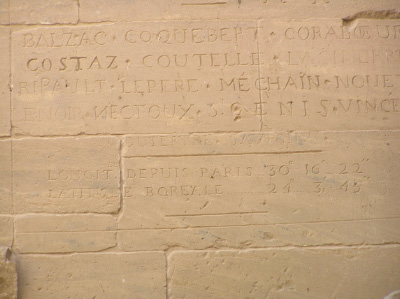 |
|
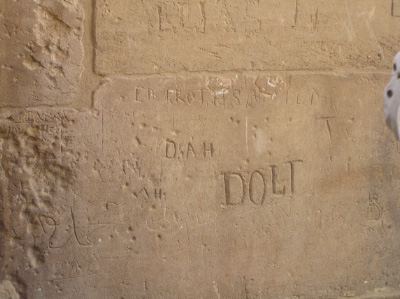 |
When Napoleon invaded Egypt in 1798 he brought a team of scientists with him who noted their discovery of the Temple of Philae along with the latitude and longitude of the temple (based on a prime meridian at Paris rather than Greenwich).
|
|
The habit of scratching one's name into the temple continued (and still continues), with this particular graffiti artist having a particularly apt name.
|
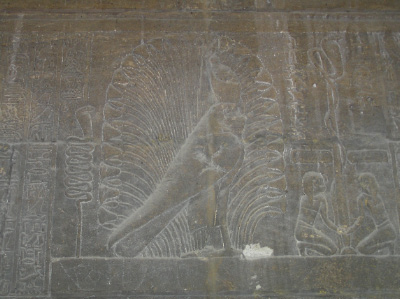 |
|
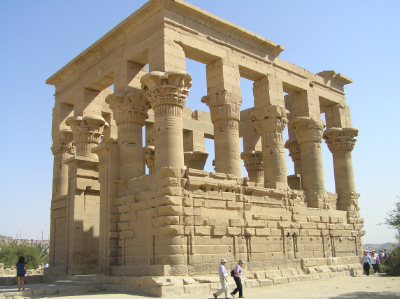 |
A carving of the falcon, symbol of the god Horus.
|
|
The Kiosk of Trajan in which the Emperor is shown offering incense to the Egyptian gods.
|
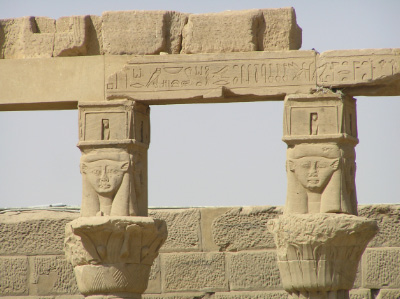 |
|
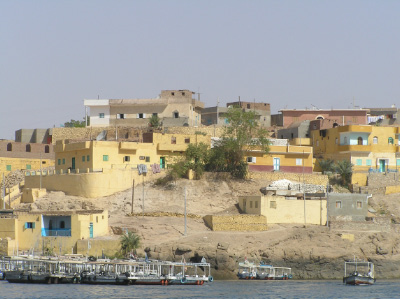 |
On the other side of the Isis temple is the Temple of Hathor, the goddess of beauty, with the typical cow-headed column capitals (apparently Egyptians thought that cows were beautiful).
|
|
Along with archaeological ruins, people had to be moved away from the rising waters. Most were Nubians and were resettled into new villages.
|




























